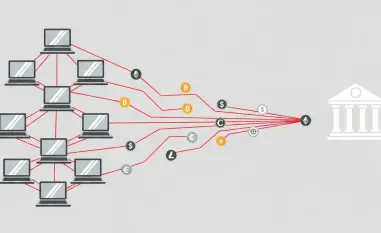As we step into 2025, the rapidly evolving landscape of cybersecurity threats remains a significant concern for businesses aiming to protect their digital assets. The unprecedented rate at which these threats develop demands that organizations stay vigilant and proactively adapt to emerging risks. This article delves into the latest cybersecurity challenges and offers strategies to safeguard your organization in this ever-changing environment, providing insights from industry experts to help you navigate these complexities effectively.
The Rapid Evolution of Cybersecurity
The cybersecurity landscape is a dynamic and constantly shifting battlefield, with new threats and vulnerabilities emerging frequently. Trevor Smith, the Executive Vice President of Brite, highlights the intricacies businesses face navigating over 3,300 cybersecurity solutions spread across 17 categories. The sheer diversity of these solutions makes it challenging for organizations to thoroughly research, evaluate, implement, and manage effective security measures. This complexity is a major hurdle for many companies aiming to establish robust defenses against cyber threats.
Smith underscores the importance of partnering with knowledgeable cybersecurity solution providers who can effectively leverage industry frameworks to assess gaps in a company’s security posture. These experts are instrumental in recommending tailored measures to defend against both current and emerging threats. Conducting regular security assessments is crucial in identifying weaknesses and ensuring that existing security tools are operating as expected. Without these assessments, businesses risk missing critical vulnerabilities that could be exploited by cyber adversaries.
Emerging Threats to Watch Out For
As we navigate through 2025, several new and increasingly sophisticated threats demand our attention. AI-enhanced phishing scams, advanced persistent threats, supply chain attacks, IoT vulnerabilities, deepfake forgeries, and ransomware attacks are becoming more prevalent and challenging to combat. Trevor Smith emphasizes the necessity of conducting a security assessment if it hasn’t been performed within the past twelve months. These assessments are vital for identifying gaps according to industry standards and testing the effectiveness of current solutions through methods like penetration testing. By systematically addressing these weaknesses, organizations can create comprehensive plans to enhance their security posture and keep their defenses current.
Smith’s insights highlight that by combining security assessments with penetration testing, businesses can not only identify vulnerabilities but also develop strategic plans to mitigate these risks effectively. This holistic approach ensures that security tools remain up to date and are capable of countering the latest threats. Keeping abreast of these evolving threats is an essential part of any cybersecurity strategy, enabling businesses to adapt and respond proactively to the shifting threat landscape.
Strategies for Strengthening Cybersecurity
To mitigate these emerging threats, Smith recommends several pivotal strategies, including implementing zero trust architecture, investing in AI-driven threat detection, eliminating alert fatigue, and strengthening endpoint security. These foundational steps are critical in fortifying an organization’s defenses. Additionally, regular security assessments and penetration testing are essential components of a robust cybersecurity strategy. These activities help identify potential vulnerabilities and ensure that security measures remain effective and resilient against new threats.
Employee training is another crucial aspect of a comprehensive cybersecurity approach. Employees often serve as both the first and last line of defense against cyber threats. Regular training sessions, paired with simulation exercises, equip employees with the skills and knowledge needed to recognize and respond to threats effectively. This proactive approach to employee training is indispensable in mitigating risks and maintaining a strong security posture. By fostering a culture of cybersecurity awareness, organizations can significantly reduce their vulnerability to cyber attacks.
Cloud Security and Misconfiguration Risks
Cloud security and misconfiguration risks are notable concerns for businesses in 2025, as highlighted by Charlie Wood, co-founder of FoxPointe Solutions. While many cloud environments are inherently secure, the potential for companies to modify configurations introduces risks that can compromise security. Wood also points out that AI is being weaponized through advanced natural language processing capabilities, enhancing the effectiveness of ransomware and social engineering attacks. These developments present formidable challenges to maintaining a secure cloud environment.
State-sponsored cyber espionage and warfare targeting critical infrastructure, government agencies, and key industries add another layer of complexity to the cybersecurity landscape. Wood advises businesses to perform thorough vendor due diligence, view cybersecurity as a critical investment, and continuously educate their staff. Focusing on people, processes, and technology is essential for developing a comprehensive security strategy. This holistic approach ensures that all aspects of an organization’s security are addressed and that vulnerabilities are minimized.
The Role of AI in Cybersecurity
Cheryl Nelan, president and owner of CMIT Solutions of Rochester, New York, emphasizes AI as a significant new access point for cybersecurity threats. While AI can undoubtedly enhance business productivity, it also introduces new vectors for cyber compromise. Nelan has observed a rise in fake-out cyber-attacks through Microsoft 365, where attackers attempt to capture multi-factor authentication (MFA) codes via misleading Microsoft pop-ups. These sophisticated attacks leverage AI’s capabilities to deceive and exploit users, highlighting the need for vigilant security practices.
To stay ahead of these evolving threats, Nelan advocates for regular, proactive conversations and collaborative planning between business owners, IT leaders, and IT partners. This continuous dialogue ensures that businesses remain vigilant and are prepared to address new and emerging threats as they arise. By fostering a collaborative and adaptive approach to cybersecurity, organizations can stay ahead of the curve and effectively manage the risks associated with AI-driven cyber threats.
The Growing Threat of Malvertising
Fred Brumm, co-owner of CETech, sheds light on the growing threat of malvertising—cyberattacks that spread malware through online advertisements. According to data from Malwarebytes, instances of malvertising saw a significant 41 percent increase from July to September of 2024. Brumm likens malvertising to a new kind of spammy email, wherein users are lured into clicking on malicious ads. He advises maintaining vigilance against clicking on suspicious links and scrutinizing for grammatical and spelling errors to avoid falling victim to these attacks.
Ensuring that you visit only legitimate websites is another essential practice to steer clear of malvertising threats. Staying informed about new cybersecurity threats by following reputable industry sources is also critical in maintaining a strong security posture. By keeping up to date with the latest developments in cybersecurity, businesses can proactively defend against emerging threats and safeguard their digital assets.
Comprehensive, Multi-Layered Approach to Cybersecurity
As we move into 2025, the quickly changing landscape of cybersecurity threats continues to be a major concern for businesses looking to protect their digital assets. The fast pace at which these threats emerge means that organizations must stay alert and adapt proactively to new risks. This article explores the latest cybersecurity challenges and provides strategies for safeguarding your organization in this dynamic environment. It offers insights from industry experts to help you navigate these complexities effectively, ensuring your business can withstand the evolving threats. From preventing data breaches to understanding advanced persistent threats, the focus is on comprehensive security measures. Emphasizing the importance of continuous monitoring, employee training, and the use of advanced technologies, the article aims to equip organizations with the knowledge needed to fend off cyberattacks. By staying informed and prepared, businesses can better protect their data and maintain their reputation in an increasingly digital world.













